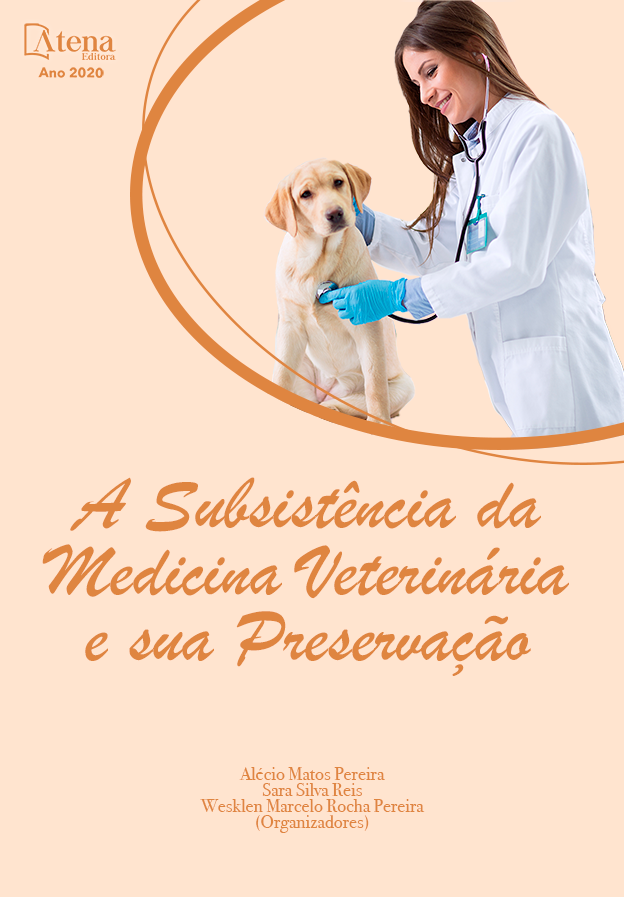
APLICAÇÃO DE ENXERTO DE OMENTO EM LEITO POTENCIALMENTE INFECTADO EM FACE DE CÃO APÓS MAXILECTOMIA PARCIAL POR NEOPLASMAS MALIGNOS: RELATO DE DOIS CASOS
O omento possui propriedades angiogênicas, riqueza vascular, presença de fatores de crescimento, ampla disponibilidade e capacidade de adesão à novos leitos, ainda que na presença de infecção. Devido suas características, ele vem sendo amplamente estudado e utilizado no auxilio à cicatrização e reparo de feridas, entretanto, seu uso na forma de enxerto livre sem microanastomose vascular (OLSMV) é pouco relatado. O objetivo deste trabalho é relatar dois casos bem-sucedidos de uso do enxerto OLSMV para preenchimento e auxílio no reparo de grandes defeitos cutâneos na face de dois cães, gerados após remoção de neoplasmas malignos por maxilectomia parcial. Dois cães, um da raça Rotweiller e outro Labrador, com 10 anos de idade, foram atendidos com neoplasias localizadas no lado esquerdo da face em região maxilar. Realizou-se maxilectomia parcial e retalhos de padrão subdérmico na síntese cutânea dos defeitos em face de ambos os animais. No pós-operatório tardio houve deiscência de sutura dos pontos da mucosa oral e da pele, permitindo comunicação da ferida cutânea com a cavidade oral. Para correção dos defeitos cutâneos, optou-se pelo uso do enxerto OLSMV com intuito de preenchimento do espaço morto e auxílio na cicatrização. Realizou-se debridamento cirúrgico das feridas cutâneas e através de celiotomia longitudinal mediana removeu-se fragmento omental livre conforme tamanho do defeito a ser recoberto. O fragmento de omento livre foi então posicionado na região dos defeitos cutâneos e suturado ao tecido celular subcutâneo com fio poliamida 3.0 em suas extremidades. Posteriormente, realizou-se novos retalhos cutâneos sobre o enxerto OLSMV, a saber, retalho de padrão subdérmico de avanço da pele do pescoço e retalho da artéria angular da boca, respectivamente. Em ambos os casos foi possível observar aumento de volume firme na região de implantação do enxerto OLSMV, sem complicações pós-operatórias e com cicatrização macroscopicamente normal de ambas feridas.
APLICAÇÃO DE ENXERTO DE OMENTO EM LEITO POTENCIALMENTE INFECTADO EM FACE DE CÃO APÓS MAXILECTOMIA PARCIAL POR NEOPLASMAS MALIGNOS: RELATO DE DOIS CASOS
-
DOI: 10.22533/at.ed.8492026108
-
Palavras-chave: Cão, cirurgia reconstrutiva, enxerto omental livre, neoplasia, oncologia.
-
Keywords: Dog, free omental graft, neoplasia, oncology, reconstructive surgery.
-
Abstract:
Due to its angiogenic properties, as well as its vascular richness, presence of growth factors, wide availability and ability to adhere to new beds, even in the presence of infection, the omentum has been widely studied and used to aid healing and repair of wounds, being its use in the form of free omental grafts without vascular microanastomosis (OLSMV) little reported. The objective of this work is to report two successful cases of use of the OLSMV graft to fill and aid in the repair of large skin defects on the face of two dogs, generated after removal of malignant neoplasms by partial maxillectomy. Two dogs, one of the Rotweiller breed and the other Labrador, 10 years old, were consulted with neoplasms located on the left side of the face in the maxillary region.
Partial maxillectomy and subdermal pattern flaps were performed in the cutaneous synthesis of defects in the face of both animals. In the late postoperative period there was dehiscence of sutures of the oral mucosa and skin, allowing communication of the cutaneous wound with the oral cavity. To correct skin defects, the authors opted for the use of the OLSMV graft in order to fill the dead space and aid healing. Surgical debridement of the skin wounds was performed and, through median longitudinal celiotomy, a free omental fragment was removed according to the size of the defect to be covered. The free omentum fragment was then positioned in the region of the skin defects and sutured to the subcutaneous tissue with 3.0 polyamide thread at its ends. Subsequently, new skin flaps were performed on the OLSMV graft, namely, a flap with a subdermal pattern of advancement of the neck skin and flap of the angular artery of the mouth, respectively. In both cases it was possible to observe an increase in firm volume in the region where the OLSMV graft was implanted, without postoperative complications and with macroscopically normal healing of both wounds. -
Número de páginas: 13
- Ana Carolina de Souza Campos
- Luciana Cabo Petry
- Lucinéia Costa Oliveira
- Fernanda de Souza Campos de Azevedo
- Anna Julia Rodrigues Peixoto
- Flávia Rosental de Oliveira
- Juliana Velloso Pinto
- Marta Fernanda Albuquerque da Silva
- Maria Eduarda dos Santos Lopes Fernandes


